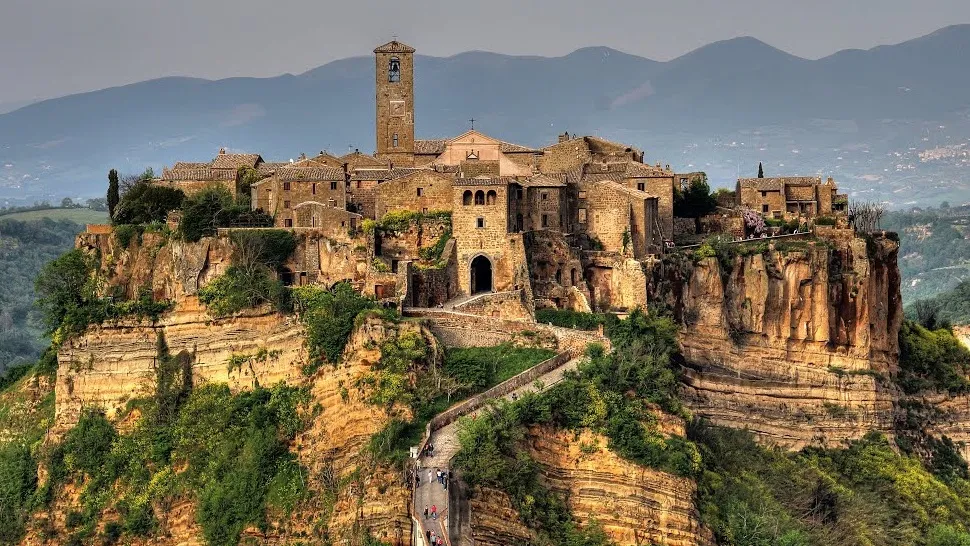Italy’s countryside is a treasure trove of charming villages, steeped in history, culture, and breathtaking landscapes. Beyond the bustling cities of Rome, Florence, and Venice, these hidden gems offer travelers an authentic glimpse of Italian life. From medieval hilltop towns to serene lakeside retreats, the Italian countryside promises an unforgettable experience. In this article, we explore the top 7 must-visit villages in Italy that you should add to your travel itinerary.
1. San Gimignano, Tuscany
Nestled in the heart of Tuscany, San Gimignano is famously known as the “Medieval Manhattan” due to its striking skyline of ancient towers. This UNESCO World Heritage site transports visitors back in time with its well-preserved architecture, cobbled streets, and quaint piazzas. San Gimignano is renowned for its white wine, Vernaccia di San Gimignano, and its artisanal gelato shops. Wander through the village’s narrow alleys, visit the Collegiate Church with its stunning frescoes, and savor local Tuscan cuisine at one of the traditional trattorias.
2. Civita di Bagnoregio, Lazio
Perched precariously on a hilltop surrounded by deep ravines, Civita di Bagnoregio is one of Italy’s most dramatic and picturesque villages. Often called “The Dying City,” this ancient settlement has survived centuries of erosion and earthquakes. Visitors access Civita di Bagnoregio via a pedestrian bridge that leads to a small village frozen in time. With its medieval stone buildings and panoramic views of the Valle dei Calanchi, this village is perfect for history enthusiasts and photographers seeking a surreal experience.
3. Orta San Giulio, Piedmont
Located on the serene shores of Lake Orta in northern Italy, Orta San Giulio offers a peaceful retreat with stunning lake views and charming streets. The village’s centerpiece is the picturesque Isola San Giulio, a tiny island featuring an ancient basilica and a monastery. Orta San Giulio’s historic center is a maze of narrow lanes lined with artisan shops, cafes, and pastel-colored houses. It’s an ideal destination for travelers looking to combine natural beauty with cultural exploration.
4. Manarola, Cinque Terre, Liguria
Manarola is one of the five famed villages of the Cinque Terre, perched dramatically on cliffs overlooking the Ligurian Sea. Known for its colorful houses stacked on steep terraces, Manarola offers breathtaking views, excellent seafood, and access to some of Italy’s best hiking trails. Stroll along the famous Via dell’Amore (Lover’s Lane) that connects Manarola to Riomaggiore, explore the local vineyards producing the region’s distinctive Sciacchetrà wine, and enjoy a sunset from the village’s small harbor.
5. Castelluccio di Norcia, Umbria
Famous for its stunning flower fields in late spring and early summer, Castelluccio di Norcia is a small mountain village located in the Sibillini Mountains National Park. This village is a paradise for nature lovers, hikers, and photographers. Each year, the “Fiorita” event celebrates the blooming of wildflowers that blanket the surrounding plains in vibrant colors. Aside from its natural beauty, Castelluccio offers delicious local specialties such as lentils and cured meats, making it a must-visit for gastronomes.
6. Pienza, Tuscany
Often described as the “ideal Renaissance town,” Pienza is a beautifully planned village perched on a hilltop in southern Tuscany. It was redesigned in the 15th century by Pope Pius II as a model of Renaissance urban planning. Visitors to Pienza will find charming streets, elegant palaces, and stunning views over the Val d’Orcia countryside. The village is particularly famous for its Pecorino cheese, which you can taste and purchase in the many local shops. Don’t miss a visit to the Pienza Cathedral and Palazzo Piccolomini.
7. Alberobello, Puglia
Alberobello is world-famous for its unique “trulli” houses — whitewashed stone huts with conical roofs. This distinctive architecture is found nowhere else in Italy and is recognized as a UNESCO World Heritage site. Located in the southern region of Puglia, Alberobello offers visitors an enchanting atmosphere with its narrow streets and quaint shops selling local crafts. Explore the Trullo Sovrano, the largest trullo in town, and enjoy authentic Apulian cuisine in one of the village’s cozy restaurants.
Why Visit Italian Villages?
Visiting Italy’s countryside villages allows travelers to experience the country’s rich cultural heritage away from crowded tourist hotspots. These villages offer a slower pace of life, genuine hospitality, and access to local traditions and cuisine. Whether you are seeking historical intrigue, natural beauty, or culinary delights, the Italian countryside villages provide a diverse range of experiences that will enrich your journey.
Tips for Exploring Italian Villages
- Travel Off-Season: Many villages are less crowded during the shoulder seasons (spring and autumn), allowing for a more relaxed visit.
- Use Public Transport or Rent a Car: Some villages are best accessed by car, but regional trains and buses can be convenient.
- Try Local Specialties: Each region has unique dishes and wines worth trying.
- Respect Local Customs: Villages often have traditional festivals — check the calendar and participate respectfully.
- Stay Overnight: Spending a night or two allows you to fully immerse yourself in village life.
Conclusion
Italy’s countryside is dotted with captivating villages that offer authentic cultural experiences, stunning landscapes, and rich history. From the medieval towers of San Gimignano to the trulli houses of Alberobello, each village has its own story waiting to be discovered. Adding these must-visit villages to your travel plans will ensure a deeper connection with Italy’s heritage and unforgettable memories. Start planning your countryside adventure today and experience the true heart of Italy.
